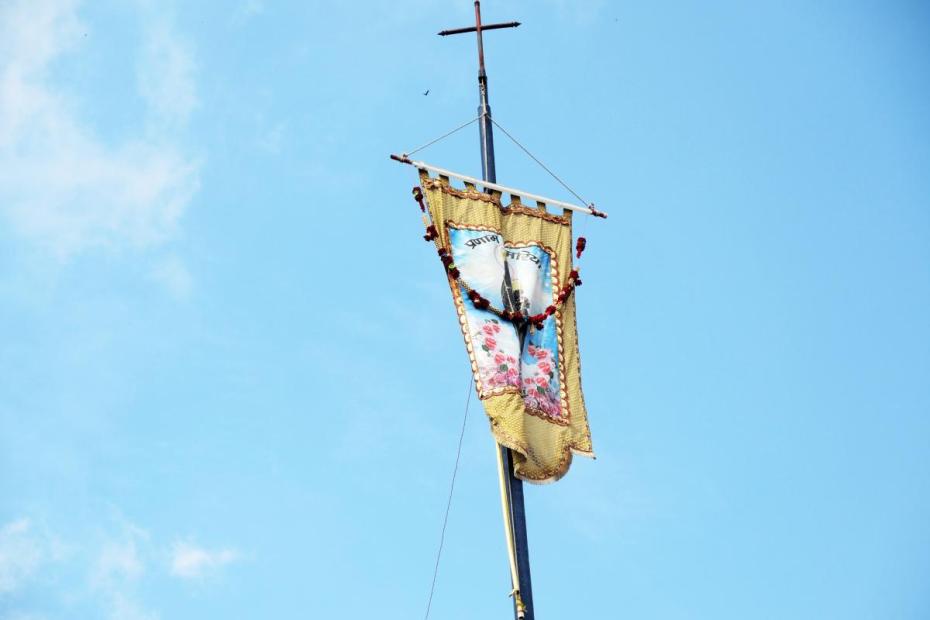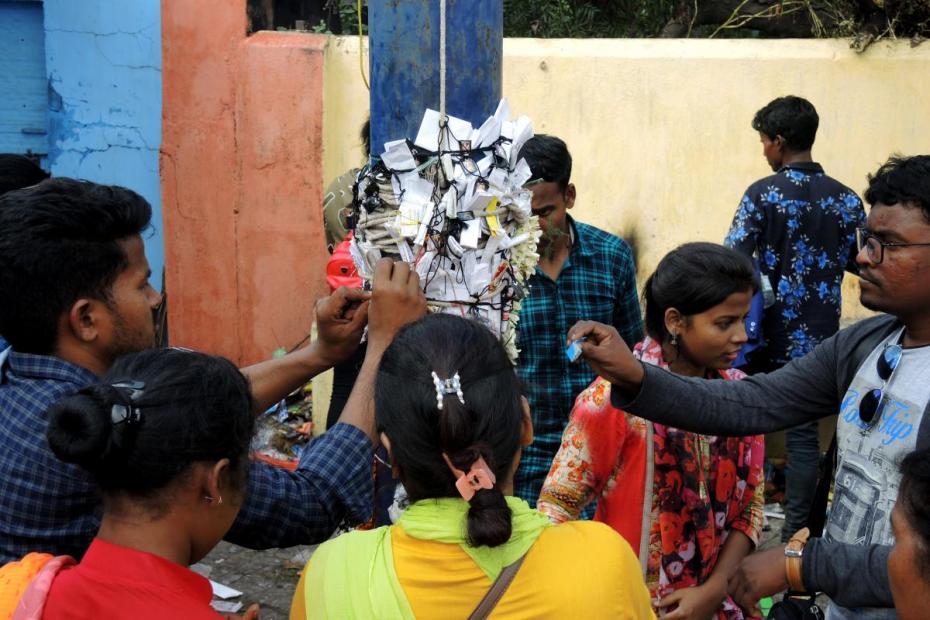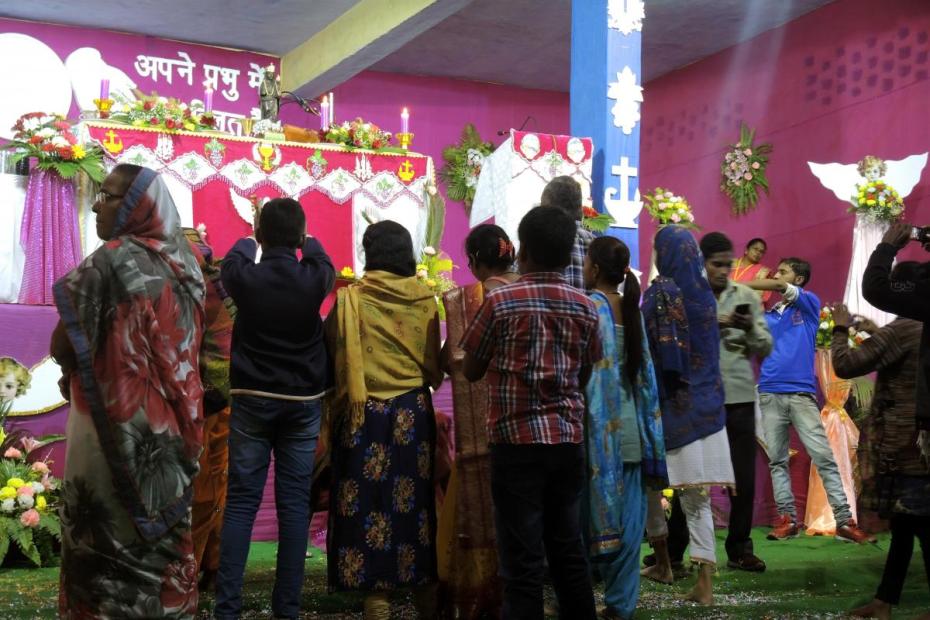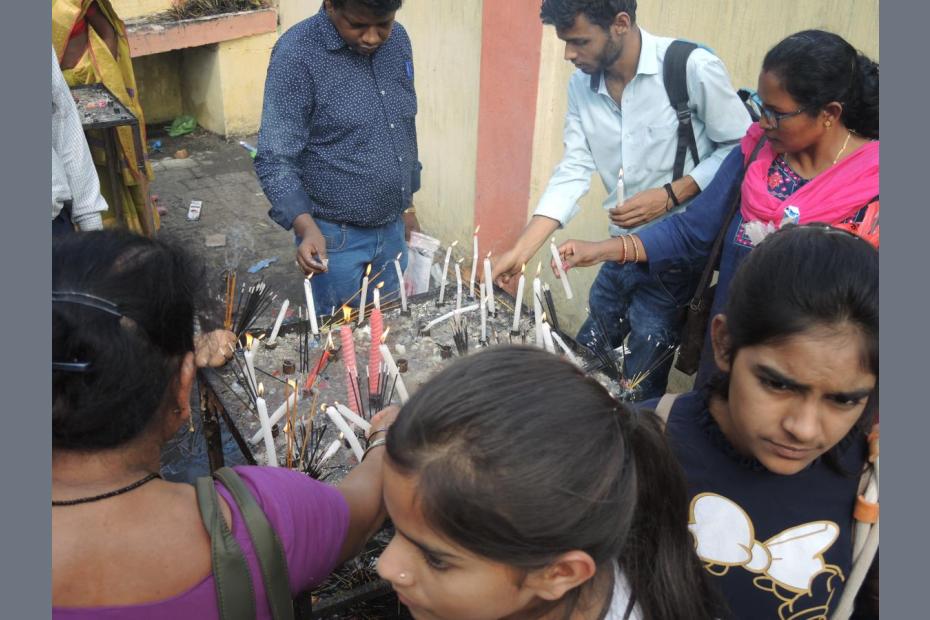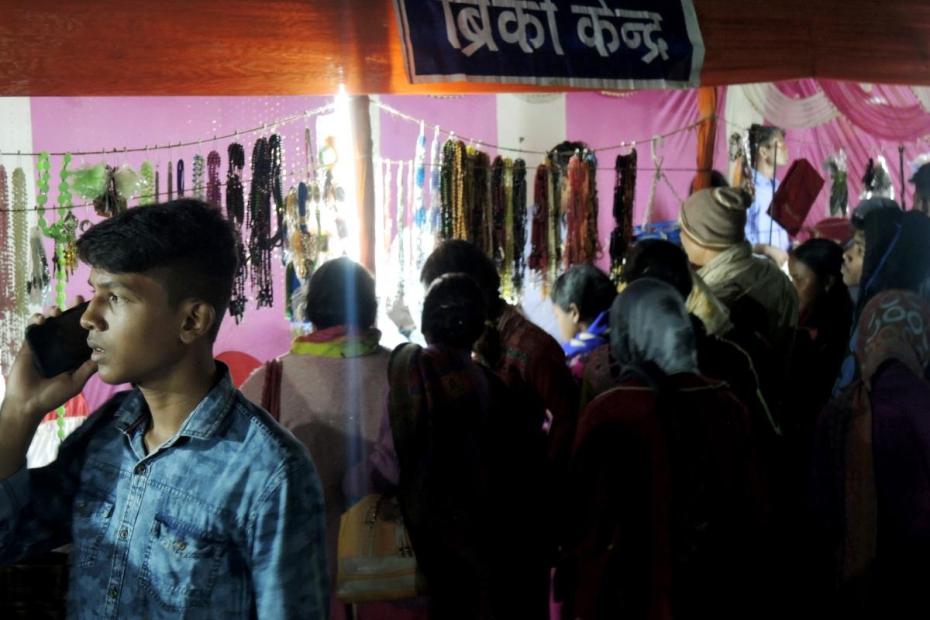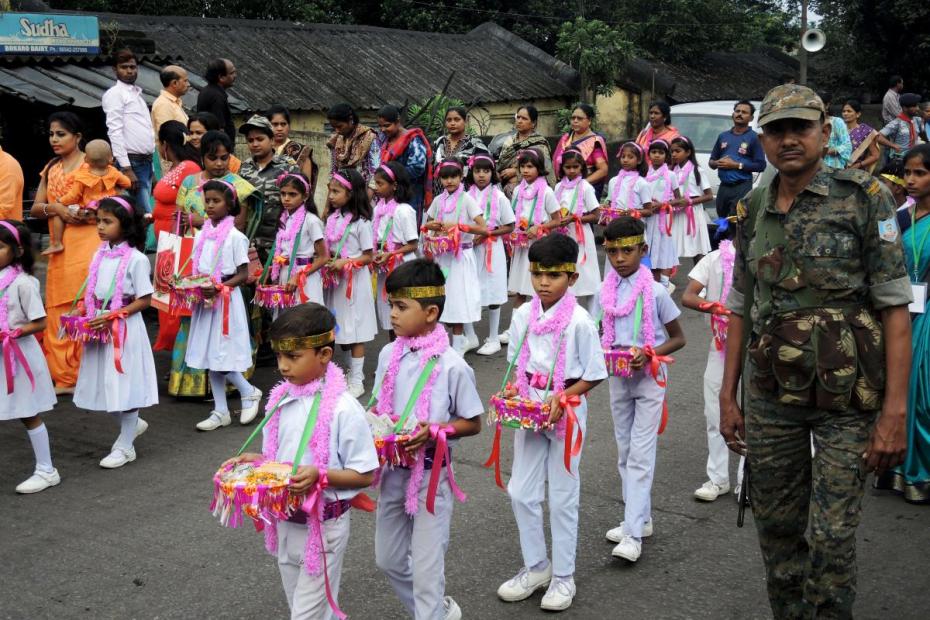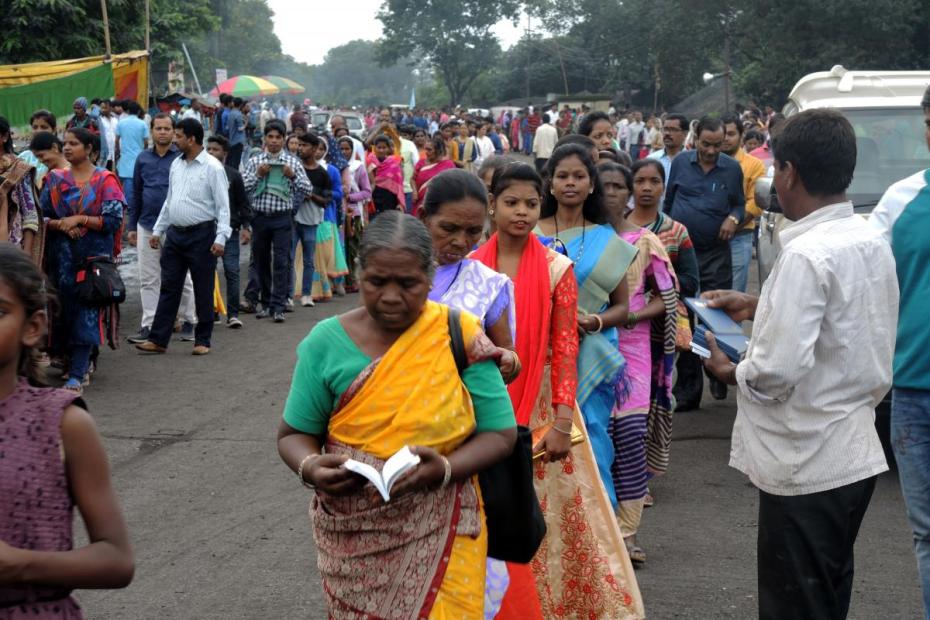The October festival dedicated to Dhori Mata in Jarangdih, a village in the North Indian state of Jharkhand, is preceded by a nine-day novena. During this time, the field surrounding the shrine is prepared for the open air Mass and for the influx of vendors who will set up shop for the festivities. The festival itself begins with the raising of the banner to the shouts of “Dhori Mata ki Jay," “Victory to Dhori Mata.”
In her shrine, Dhori Mata usually rests on a high column or pedestal. But during the festival, she comes down to be close to devotees and pilgrims. The devotees and pilgrims who approach her touch the glass of her tabernacle to receive blessings or an infusion of sacred power—a blessing or power that can also be transferred to material objects such as candles, rosary beads, or water. She is honored with flower petals and by pilgrims and devotees touching their foreheads to her feet—a sign of deep respect in Indian culture. Some devotees and pilgrims refer to Dhori Mata’s tabernacle by using the Hindi word “ashiyana,” meaning a “small dwelling” or “nest” that is built with devotion and love.
Outside the precincts of the shrine, some devotees light candles to mark specific prayers or petitions. Other devotees tie rosaries or scapulars to the pole flying Dhori Mata’s banner and some also write prayerful intentions or notes of thanksgiving. Still other devotees break coconuts—an act understood to bring good fortune in the coming year. The hot flames of the candles are thus balanced by cooling coconut water to bring a sense of underlying order to the acts of devotion occurring within the shrine’s precincts.
Talk of miracles
Dhori Mata is known as a miracle worker. Pilgrims often make a vow, or mannat, in which they petition Dhori Mata for a particular favor and, if the favor is granted, fulfill their vow by crowning her or having their hair tonsured.
A Hindi pamphlet widely distributed in the area records personal testimonies to favors received through Dhori Mata’s intercession: a mother who prayed for her son’s marriage to be successfully arranged; couples from Hazaribag and Jamshedpur who had children after being infertile; a child cured after accidently consuming poison; a young women to whom Dhori Mata appeared and who then received positive results on a series of tests for a presumed heart condition.
Those in line also spoke of experiences of Dhori Mata’s grace: a couple from the Dhumka diocese who finally had a child after four years; a student from Ranchi who received high marks in an examination; another student from Bokaro Steel City who obtained government service. Such claims reflect the cultural and sociological dynamics of life in the Jharkhand, which remains one of the most economically challenged Indian states in spite of its natural resources.
Darśan and devotion
Dhori Mata takes her place among a number of Catholic “Black Madonnas,” such as the Black Madonna of Częstochowa. In many ways, Dhori Mata is treated in a similar way as would a relic that represents a tangible memorial of a saint. But at the Dhori Mata Tirthalaya this dynamic devotion has a particularly Indian quality referred to as “darśan.”
Darśan literally means “sight” and refers to seeing—and sometimes being seen by—a deity, saint or other important personage in which there is a reciprocal flow of devotion and blessing. Not only does the display of Dhori Mata in her shrine allow darśan, but the procession does too, as Dhori Mata makes her way into the surrounding village of Jarangdih, accompanied by thousands of pilgrims and devotees with decades of the rosary recited via loudspeaker.
The term darśan has a definitional elasticity because it is such a pervasive form of devotion within Indian culture. For example, when self-identified Catholics spoke of “darśan,” they immediately referenced an experience they associated with Dhori Mata’s intercession—seeing was important but remembering or telling a story of hope was also an essential part of the overall act of devotion. In this sense, perhaps, the image statue provides a way of focalizing attention on the personal presence of Dhori Mata for those who seek her assistance—a concentrated experience of Dhori Mata who herself is most certainly confined to, or exclusively identified with, the statue in her image.
